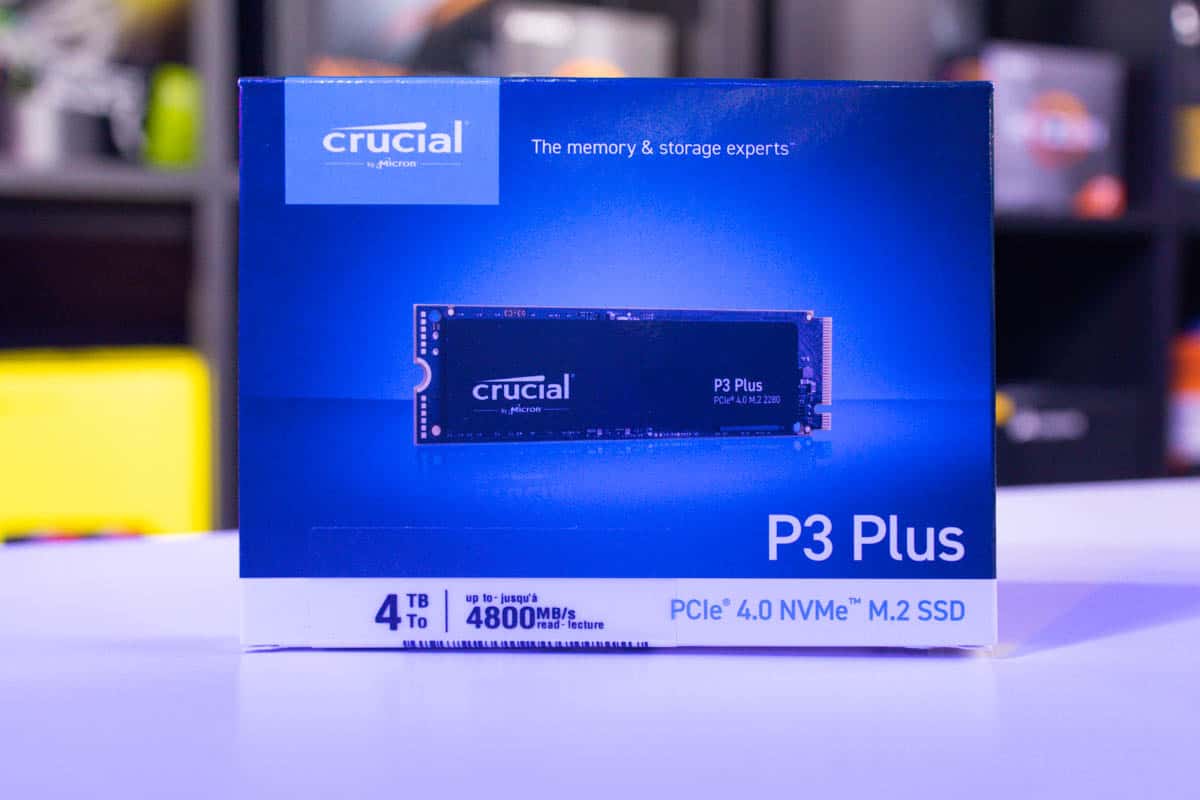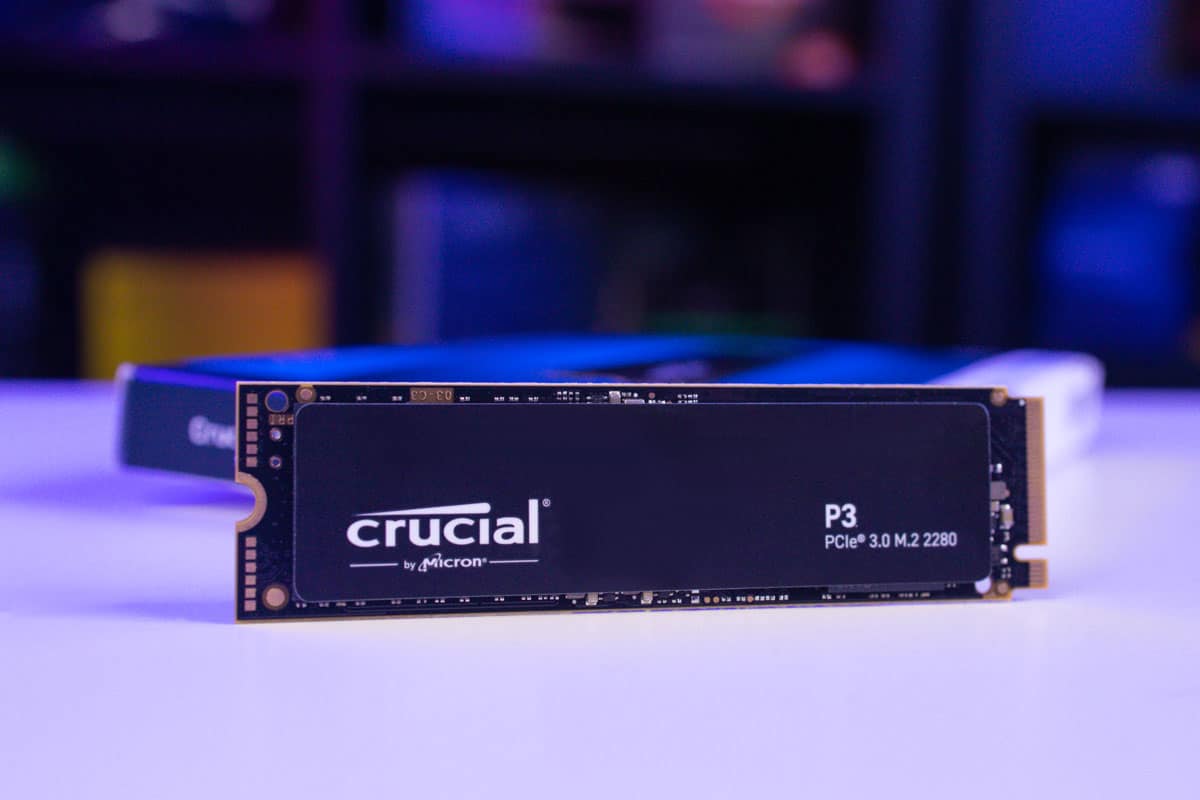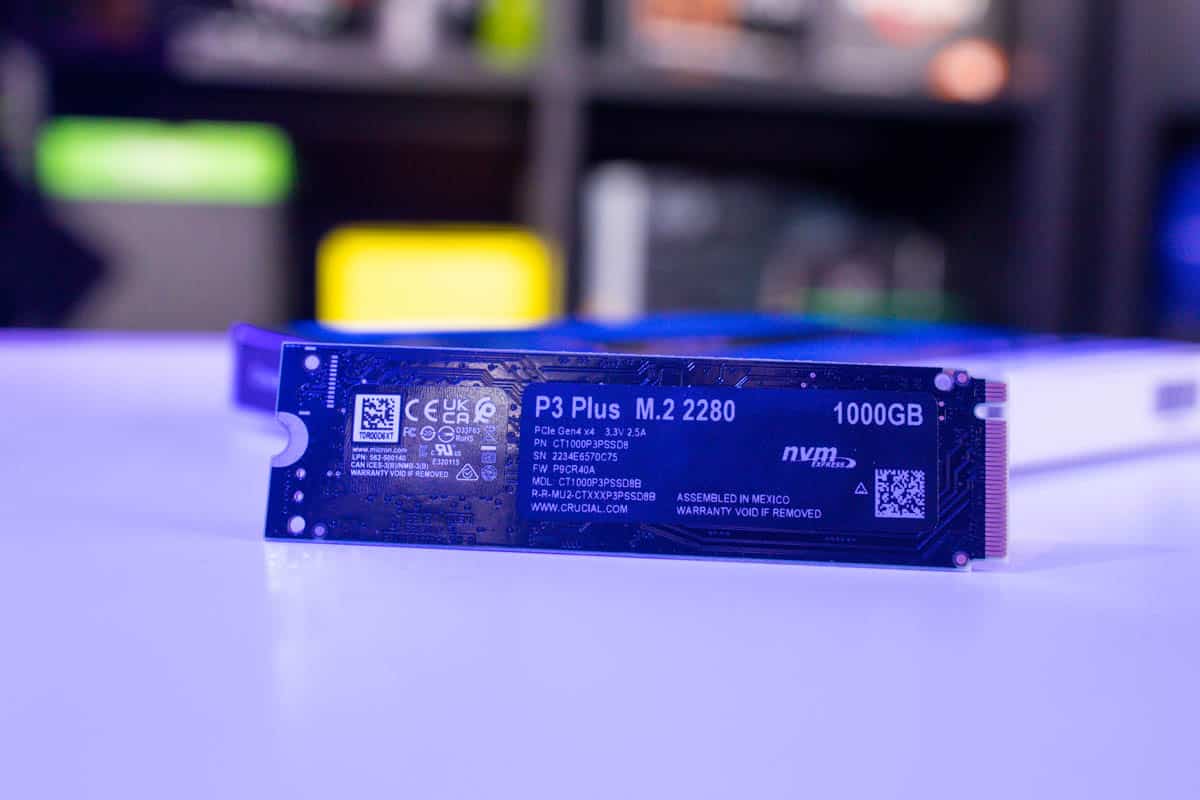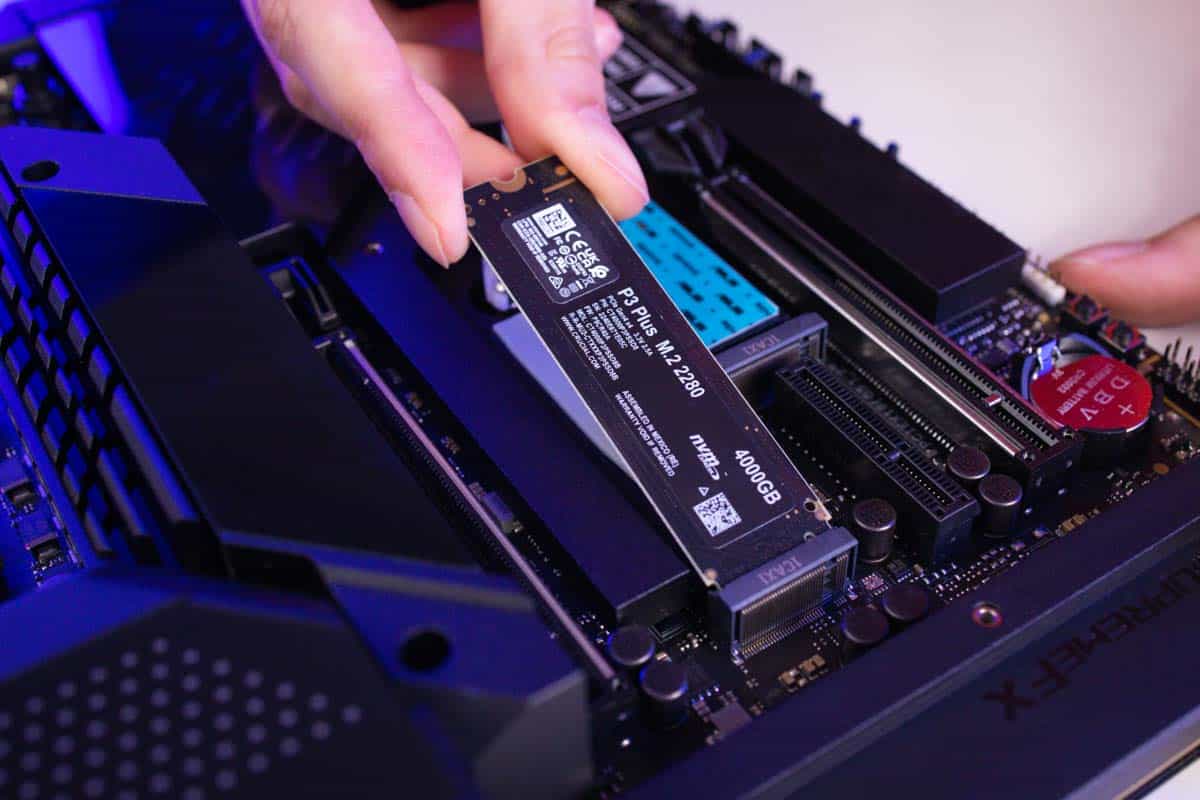Crucial P3 SSDs: Future-facing performance at a great price
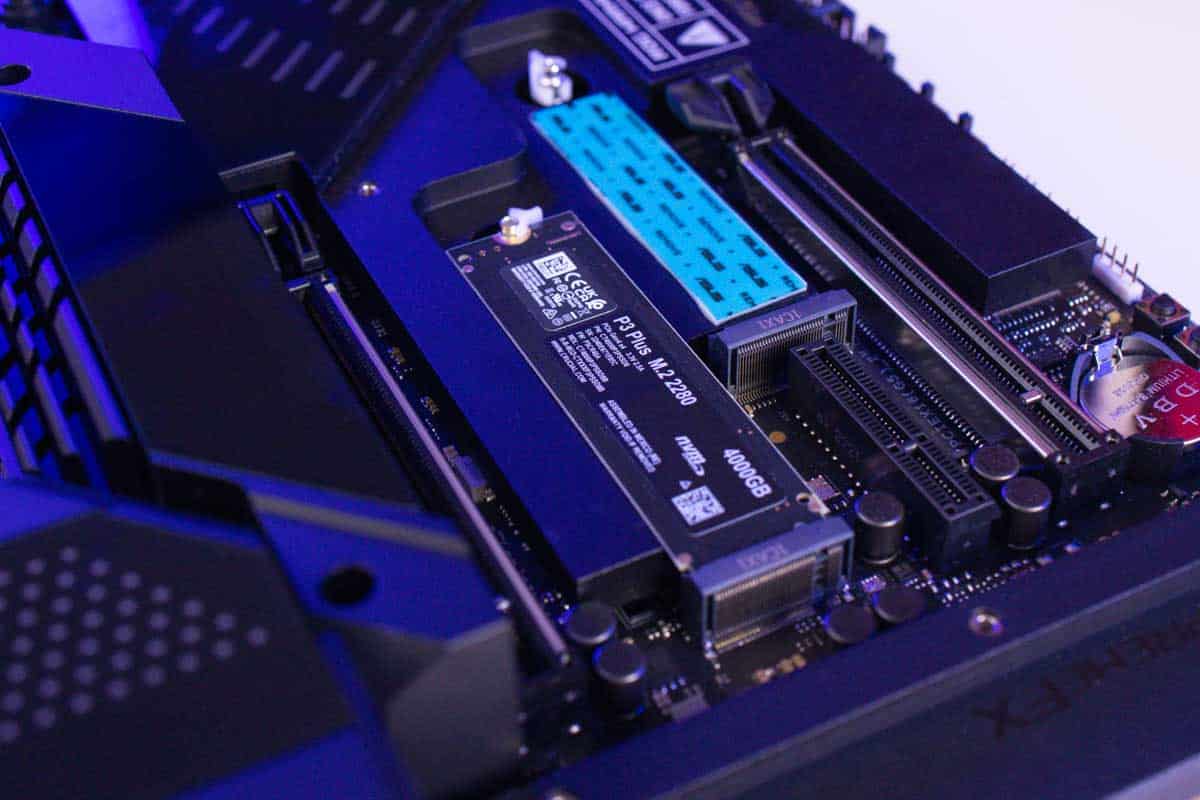
Table of Contents
It's a great time to build a new system or to upgrade an existing one, and a core part of that is getting the right SSD. If that's what you need, the Crucial P3 and P3 Plus products should really be in contention.
Why? The reason is this: Most people, including the PC Guide team, opt for a mix of performance and affordability in a new set-up; building for current needs with headroom too.
Prime Day is finally here! Find all the biggest tech and PC deals below.
- Sapphire 11348-03-20G Pulse AMD Radeon™ RX 9070 XT Was $779 Now $739
- AMD Ryzen 7 7800X3D 8-Core, 16-Thread Desktop Processor Was $449 Now $341
- ASUS RTX™ 5060 OC Edition Graphics Card Was $379 Now $339
- LG 77-Inch Class OLED evo AI 4K C5 Series Smart TV Was $3,696 Now $2,796
- Intel® Core™ i7-14700K New Gaming Desktop Was $320.99 Now $274
- Lexar 2TB NM1090 w/HeatSink SSD PCIe Gen5x4 NVMe M.2 Was $281.97 Now $214.98
- Apple Watch Series 10 GPS + Cellular 42mm case Smartwatch Was $499.99 Now $379.99
- ASUS ROG Strix G16 (2025) 16" FHD, RTX 5060 gaming laptop Was $1,499.99 Now $1,274.99
- Apple iPad mini (A17 Pro): Apple Intelligence Was $499.99 Now $379.99
*Prices and savings subject to change. Click through to get the current prices.
Micron's newest Crucial P3 SSDs deliver exactly this, with a level of consistency to benefit gaming, home office, productivity, and other builds and use-cases too.
Essentially, if you're upgrading then well-performing parts that extend the life of your current PC and offer great value are logical investments. For that, there are the P3 products.
Or, if you're building a new, more modern PC making use of PCIe Gen 4, the P3 Plus products are strong options.
Crucial P3 SSD Release
Micron is clearly one of the big three in the SSD market, and any new releases come with extensive consideration and product development.
This extends to the P3 and P3 Plus range, released in July 2022, at a point where the PC market started ramping up for some pretty big changes. CPUs, motherboards, and GPU releases are great, but the humble SSD is critical too.
Crucial's release brought a slew of new SKUs to support users building new setups or upgrading and optimizing older ones.
Lineup and specs
The P3 SSD lineup consists of eight NVMe M.2 SKUs: the P3 500GB, 1TB, 2TB and 4TB SSDs (supporting PCIe Gen 3 4x), and the P3 Plus 500GB, 1TB, 2TB, and 4TB (supporting PCIe Gen 4 4x).
Plenty of options then, and it means that whether you want to upgrade your OS drive, or opt for some boosted storage capacity, you can.
There's more to the recent arrivals though, and this is where things get a little bit jargony – but we'll cut through this and tell you the key info below.
Crucial P3 and P3 Plus tech explained
The P3 range makes use of QLC NAND memory. QLC stands for quad-level cell and is generally the preferred technology for larger SSD storage over the most common alternative – TLC (triple-level cell).
It's not quite as good in performance versus TLC, but QLC can store four bits per cell (vs three bits for TLC) so it offers better density and so more options in terms of capacities.
And of course, if you don't have the budget for lightning-quick TLC – based SSD drives, thunder-quick QLC does a very good job.
Micron has opted for a 176-layer 3D NAND production process in the QLC-based P3 and P3 Plus SSDs. This surpasses the previous 128-layer process and adds a silicon nitride layer to combat an issue known as cell-to-cell capacity coupling.
What is that? Cell-to-cell capacity coupling impacts programming times due to the presence of electrical charges in NAND cells. Micron's silicon nitride layer is nonconductive, batting away the charges and so negating what is ultimately a hit to SSD reliability and performance.
Crucial P3 SSD performance
What does all this mean? Well, a clear upside of Crucial's P3 SSD range, thanks to its fabrication process, is an approximate 25% performance boost (read AND write) over SSDs using a 128-layer fabrication process.
The benefits are present for both P3 and P3 Plus products and put the range in a favorable position against the main competition.
For example, comparing the P3 2TB SSD against, say, Samsung's highly regarded 970 Evo Plus 2TB, shows a clear winner.
| SSD Model | Samsung Evo Plus 2TB | Crucial P3 2TB |
| Type | PCI Express 3.0 x4 NVMe | PCI Express 3.0 x4 NVMe |
| Form Factor | M.2 2280 | M.2 2280 |
| Sequential read/write | Up to 3500MB/s Read, 3300MB/s Write | Up to 3500MB/s Read, 3000MB/s Write |
| 4K IOPS Read | 600000 | 700000 |
| 4K IOPS Write | 550000 | 650000 |
Sequential read and write are fairly even here: read for both is 3,500MB/s, while Samsung nicks the write award with 3,300MB/s versus the P3's 3,000MB/s.
It's a different story in 4K IOPS read and write though, with the P3 taking first in both with 650000 and 700000 respectively. That's 100000 above the scores of the £200+ Samsung Evo Plus…in both.
Crucial P3 SSD Pricing
So, what about the price? Strong performance, reliability, and a range of capacities mean Micron could honestly price the P3 and P3 Plus SSDs above where they've landed.
It could do that, but it hasn't. And to prove it, the P3 2TB SSD is actually £80 cheaper than the Samsung Evo Plus 970. The rest of the P3 and P3 Plus range is proportionately priced too, currently at under 8 pence per MB.
| Micron Crucial SSD Model | Gen | Price |
| Crucial P3 4TB M.2-2280 | PCIe 3.0 x4 | £306.90 |
| Crucial P3 2TB M.2-2280 | PCIe 3.0 x4 | £148.11 |
| Crucial P3 1TB M.2-2280 | PCIe 3.0 x4 | £74.05 |
| Crucial P3 500GB M.2-2280 | PCIe 3.0 x4 | £43.56 |
| Crucial P3 Plus 4TB M.2-2280 | PCIe 4.0 x4 | £442.45 |
| Crucial P3 Plus 2TB M.2-2280 | PCIe 4.0 x4 | £208.57 |
| Crucial P3 Plus 500GB M.2-2280 | PCIe 4.0 x4 | £60.65 |
Final thoughts
So where does that leave us? Back at the beginning of this article, with a sustained sentiment. If you're looking to upgrade an older system or build a budget PC – or you're a certain tech writer with a Z270 motherboard still in use – the P3 range would be a great choice.
Alternatively, if you're looking to build a newer system for gaming, a home office set up or other use-case scenarios, Micron's Crucial P3 Plus SSDs are there for PCIe Gen 4.
In fact, if you wanted to, and felt comfortable doing so, Crucial P3 Plus SSDs would even be great for upgrading the storage in a PS5.
For reliable performance (and we mean performance), at a great price and overall value, don't overlook the Crucial P3 SSD range from Micron. They may not be flashy, and they may not be a headline component. But we reckon you'll be glad you got one.


